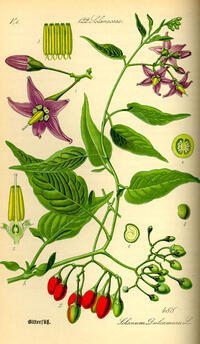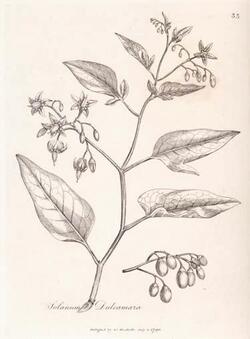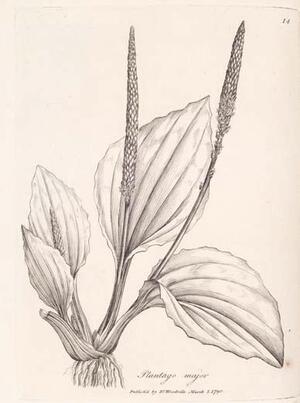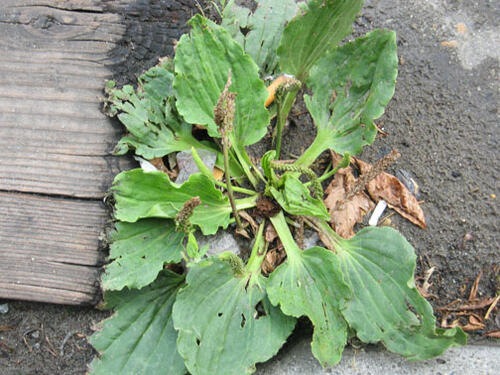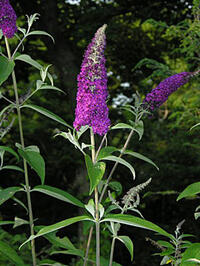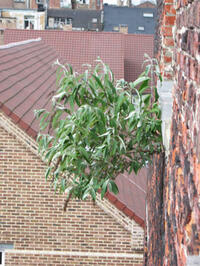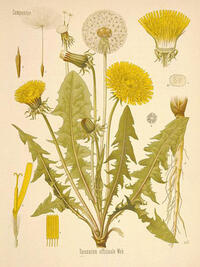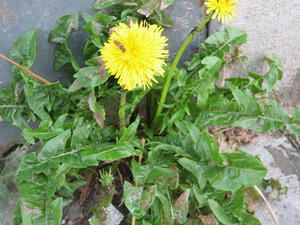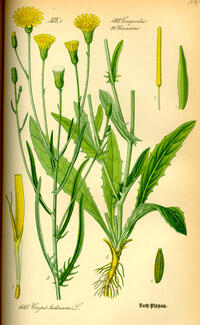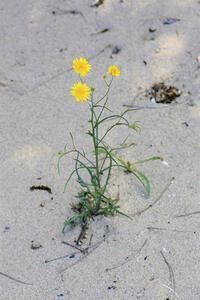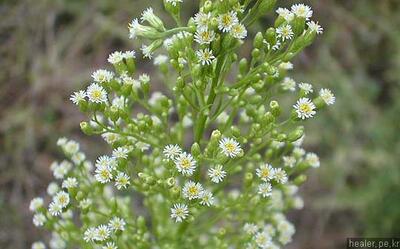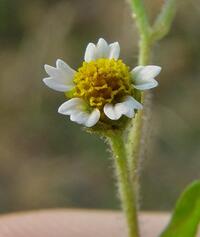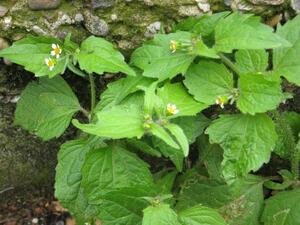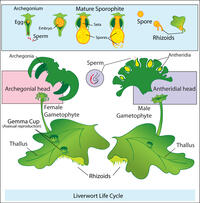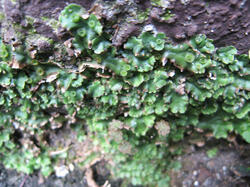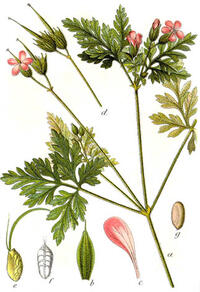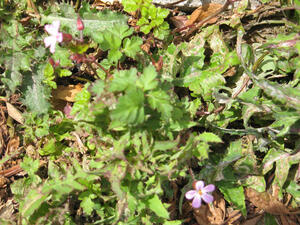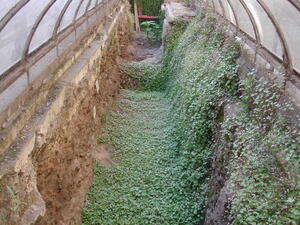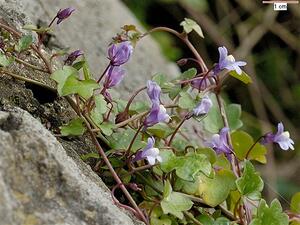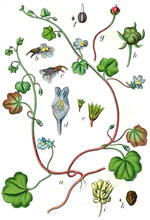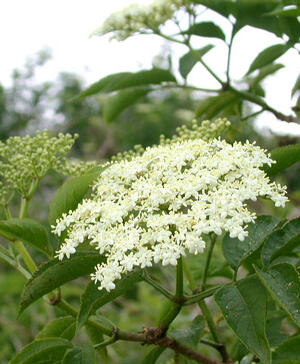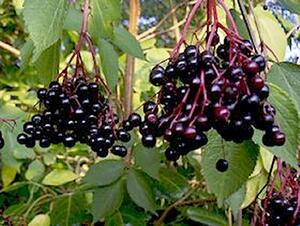Table of Contents
Brussels Plants
the information about plants which grows around the FoAM building/ Koolmijnenkaai 30-34
Solanum dulcamara
“—Description—It is a perennial, shrubby plant, quite woody at the base, but throws out long, straggling, slender branches, which trail over the hedges and bushes among which it grows, reaching many feet in length, when supported by other plants. They are at first green and hairy, but become woody and smooth as they grow older, with an ashygreen bark. The plant was called the Woody Nightshade by the old herbalists to distinguish it from the Deadly Nightshade. Its generic name Solanum is derived from Solor (I ease), and testifies to the medicinal power of this group of plants. The second name, Dulcamara, used to be more correctly written in the Middle Ages, Amaradulcis, signifying literally 'bittersweet,' the common country name of the plant, given to it in reference to the fact that the root and stem, if chewed, taste first bitter and then sweet. Another old name is Felonwood, probably a corruption of Felonwort, the plant for felons - felon being an old name for whitlow. We are told by an old writer that:'the Berries of Bittersweet stamped withrusty Bacon, applied to the Joynts of the Finger that is troubled with a Felon hath been found by divers country people who are most subject thereto to be very successful for the curing of the same.' Gerard says of it:'The juice is good for those that have fallen from high places, and have been thereby bruised or beaten, for it is thought to dissolve blood congealed or cluttered anywhere in the intrals and to heale the hurt places.' Boerhaave, the celebrated Dutch physician, considered the young shoots superior to Sarsaparilla as a restorative, and Linnaeus, who at first had an aversion to the plant, later spoke of it in the highest terms as a remedy for rheumatism, fever and inflammatory diseases of all kinds. There are few complaints for which it has not been at some time recommended.”
“—Medicinal Action and Uses— The drug possesses feeble narcotic properties, with the power of increasing the secretions, particularly those of the skin and kidneys. It has no action on the pupil of the eye. It is chiefly used as an alterative in skin diseases, being a popular remedy for obstinate skin eruptions, scrofula and ulcers. It has also been recommended in chronic bronchial catarrh, asthma and whoopingcough. For chronic rheumatism and for jaundice it has been much employed in the past, an infusion of 1 OZ. of the dried herb to 1/2 pint water being taken in wineglassful doses, two or three times daily. From the fluid extract made from the twigs, a decoction is prepared of 10 drachms in 2 pints of boiling water, boiled down to 1 pint, and taken in doses of 1/2 to 2 OZ. with an equal quantity of milk. The berries have proved poisonous to a certain degree to children. Fluid extract, 1/2 to 2 drachms.”
-Information source:- http://www.botanical.com/botanical/mgmh/n/nighwo06.html
as well as:
Hordeum murinum (wall barley)
Wall barley is an annual grass common in central, southern and eastern England, and scattered elsewhere. It is found on waste and rough ground and barish patches in rough grassland. It occurs on the margins of cultivated fields. Distribution is related both to the availability of ruderal habitats and to climate. Frequency decreases with increasing rainfall combined with decreasing temperatures, although, it can cope with greater rainfall if temperatures are higher. In ruderal situations it extends further into cooler wetter regions by taking advantage of features such as the base walls where conditions are locally warmer and drier. Wall barley is part of a complex of overlapping subspecies whose centre of distribution is in the Mediterranean region. Subspecies murinum is the native grass in the UK. Sub-species leporinum and glaucum are introduced casuals. In Australia, biotypes of the latter two sub-species have been reported with resistance to the herbicide paraquat In New Zealand, wall barley is a particular problem to stock. The sharply pointed seeds can penetrate the eyes, mouth and skin of sheep causing animal losses and devaluing the pelts. The level of damage is influenced by the breed of sheep, mainly due to differences in the structure of the coat. Sheep dogs too are affected when the seeds become embedded between their toes.
http://www.gardenorganic.org.uk/organicweeds/weed_information/weed.php?id=125
Plantago major(Broad-Leaved Plantain)
It grows from a very short rhizome, which bears below a great number of long, straight, yellowish roots, and above, a large, radial rosette of leaves and a few Iong, slender, densely-flowered spikes. The leaves are ovate, blunt, abruptly contracted at the base into a long, broad, channelled footstalk (petiole). The blade is 4 to 10 inches long and about two-thirds as broad, usually smooth, thickish, five to eleven ribbed, the ribs having a strongly fibrous structure, the margin entire, or coarsely and unevenly toothed. The flower-spikes, erect, on long stalks, are as long as the leaves, 1/4 to 1/3 inch thick and usually blunt. The flowers are somewhat purplish-green, the calyx fourparted, the small corolla bell-shaped and four-lobed, the stamens four, with purple anthers. The fruit is a two-celled capsule, not enclosed in the perianth, and containing four to sixteen seeds. The Plantain belongs to the natural order Plantaginaceae, which contains more than 200 species, twenty-five or thirty of which have been reported as in domestic use. The drug is without odour: the leaves are saline, bitterish and acrid to the taste; the root is saline and sweetish. The glucoside Aucubin, first isolated in Aucuba japonica, has been reported as occurring in many species.
Medicinal Action and Properties
Refrigerant, diuretic, deobstruent and somewhat astringent. Has been used in inflammation of the skin, malignant ulcers, intermittent fever, etc., and as a vulnerary, and externally as a stimulant application to sores. Applied to a bleeding surface, the leaves are of some value in arresting haemorrhage, but they are useless in internal haemorrhage, although they were formerly used for bleeding of the lungs and stomach, consumption and dysentery. The fresh leaves are applied whole or bruised in the form of a poultice. Rubbed on parts of the body stung by insects, nettles, etc., or as an application to burns and scalds, the leaves will afford relief and will stay the bleeding of minor wounds.
Fluid extract: dose, 1/2 to 1 drachm.
In the Highlands the Plantain is still called 'Slan-lus,' or plant of healing, from a firm belief in its healing virtues. Pliny goes so far as to state, 'on high authority,' that if 'it be put into a pot where many pieces of flesh are boiling, it will sodden them together.' He also says that it will cure the madness of dogs. Erasmus, in his Colloquia, tells a story of a toad, who, being bitten by a spider, was straightway freed from any poisonous effects he may have dreaded by the prompt eating of a Plantain leaf.
Another old Herbal says: 'If a woodhound (mad dog) rend a man, take this wort, rub it fine and lay it on; then will the spot soon be whole. ' And in the United States the plant is called 'Snake Weed,' from a belief in its efficacy in cases of bites from venomous creatures; it is related that a dog was one day stung by a rattlesnake and a preparation of the juice of the Plantain and salt was applied as promptly as possible to the wound. The animal was in great agony, but quickly recovered and shook off all trace of its misadventure. Dr. Robinson (New Family Herbal) tells us that an Indian received a great reward from the Assembly of South Carolina for his discovery that the Plantain was 'the chief remedy for the cure of the rattlesnake.'
Our Saxon ancestors esteemed it highly and in the old Lacnunga the Weybroed is mentioned as one of nine sacred herbs. In this most ancient source of Anglo-Saxon medicine, we find this 'salve for flying venom':'Take a handful of hammer wort and a handful of maythe (chamomile) and a handful of waybroad and roots of water dock, seek those which will float, and one eggshell full of clean honey, then take clean butter, let him who will help to work up the salve, melt it thrice: let one sing a mass over the worts, before they are put together and the salve is wrought up.
Buddleja Davidii (Butterfly Bush)
Butterfly bush is the perfect foundation plant for a butterfly garden. The species are commonly known as Butterfly Bush due to their attractiveness to butterflies; they are also attractive to bees, moths and ladybirds. The species of buddleia with red flowers are also attractive to hummingbirds. The larger cultivars should be placed behind other shrubs and blooming annuals and perennials. Dark flowered varieties show up quite well against a light background. Plant alongside pentas (Pentas lanceolata), lantana (Lantana camara) and zinnias Zinnia elegans) for non-stop butterfly activity, and find a place nearby for parsley (Petroselinum crispum), passion vine (Passiflora incarnata) and other butterfly larval food plants.
The most popular cultivated species is Buddleja davidii from central China, named after the French naturalist Père Armand David. Other common garden species include Buddleja globosa from southern Chile, grown for its strongly honey-scented orange globular flower-heads, and Buddleja alternifolia with lilac coloured flowers.
Some species are commonly found as escapees from the garden. B. davidii in particular is a great coloniser of dry open ground; in towns in Britain, it often self-sows on waste ground, where it grows into a dense thicket, and it is listed as an invasive species in many areas. It is frequently seen beside railway lines, on derelict factory sites and after the Second World War on urban bomb sites.
It is not able to survive the harsh winters of northern continental climates, being killed by temperatures below about -15°C to -20°C.
http://www.floridata.com/ref/B/budd_dav.cfm http://en.wikipedia.org/wiki/Buddleia
Pissenlit officinal or Taraxacum officinale(Dandelion)
There is some doubt, however, as to whether it was really the shape of the leaves that provided the original notion, as there is really no similarity between them, but the leaves may perhaps be said to resemble the angular jaw of a lion fully supplied with teeth. Some authorities have suggested that the yellow flowers might be compared to the golden teeth of the heraldic lion, while others say that the whiteness of the root is the feature which provides the resemblance. Flückiger and Hanbury in Pharmacographia, say that the name was conferred by Wilhelm, a surgeon, who was so much impressed by the virtues of the plant that he likened it to Dens leonis. In the Ortus Sanitatis, 1485, under 'Dens Leonis,' there is a monograph of half a page which concludes:'The Herb was much employed by Master Wilhelmus, a surgeon, who on account of its virtues, likened it to “eynem lewen zan, genannt zu latin Dens leonis” (a lion's tooth, called in Latin Dens leonis).' In the pictures of the old herbals, for instance, the one in Brunfels' Contrafayt Kreuterbuch, 1532, the leaves very much resemble a lion's tooth. The root is not illustrated at all in the old herbals, as only the herb was used at that time. The name of the genus, Taraxacum, is derived from the Greek taraxos (disorder), and akos (remedy), on account of the curative action of the plant. A possible alternative derivation of Taraxacum is suggested in The Treasury of Botany:'The generic name is possibly derived from the Greek taraxo (“I have excited” or “caused”) and achos (pain), in allusion to the medicinal effects of the plant.'
Many little flies also are to be found visiting the Dandelion to drink the lavishly-supplied nectar. By carefully watching, it has been ascertained that no less than ninety-three different kinds of insects are in the habit of frequenting it. The stigma grows up through the tube formed by the anthers, pushing the pollen before it, and insects smearing themselves with this pollen carry it to the stigmas of other flowers already expanded, thus insuring cross-fertilization. At the base of each flower-head is a ring of narrow, green bracts the involucre. Some of these stand up to support the florets, others hang down to form a barricade against such small insects as might crawl up the stem and injure the bloom without taking a share in its fertilization, as the winged insects do. —History— The first mention of the Dandelion as a medicine is in the works of the Arabian physicians of the tenth and eleventh centuries, who speak of it as a sort of wild Endive, under the name of Taraxcacon. In this country, we find allusion to it in the Welsh medicines of the thirteenth century. Dandelion was much valued as a medicine in the times of Gerard and Parkinson, and is still extensively employed. Dandelion roots have long been largely used on the Continent, and the plant is cultivated largely in India as a remedy for liver complaints.
http://www.botanical.com/botanical/mgmh/d/dandel08.html
- Dandelion Folklore/ http://fohn.net/dandelion-pictures/dandelion-wine-recipe.html
- Dandelion Wine/ http://pjf.id.au/brew/brews/09_dandelion_wine.html
- Dandelion Jam and Martha's Spider Bread/ http://www.dandelionjam.com/page13.html
- Dandelion Literature/ http://fohn.net/dandelion-pictures/literature.html
- Dandelion Magick / http://newage.suite101.com/article.cfm/dandelion_magic
- Myth and Folklore: Dandelions/ http://www.suite101.com/article.cfm/13513/110042
Crepis tectorum (Narrow-Leaved Hawk's-Beard)
Crepis(Crepis tectorum) is a genus of about 200 annual and perennial flowering plants found in the family Asteraceae resembling Dandelion, the main differences being that Hawksbeards have multiple flowers per plant as well as branching stems. The name Crepis derives from Greek, meaning 'shoe'. In some parts of the world the genus is known as Hawksbeard. Species can be found all through the northern hemisphere and tropical Africa. Crepis species are used as food plants by the larvae of some Lepidoptera species including Broad-barred White.
Conyza canadensis
“Conyza canadensis (formerly Erigeron canadensis L.) is an annual plant native throughout most of North America and Central America. Common names include Horseweed, Canadian Horseweed, Canadian Fleabane, Coltstail, Marestail and Butterweed. It is an annual plant growing to 1.5 m tall, with sparsely hairy stems. The leaves are slender, 2-10 cm long and up to 1 cm broad, with a coarsely toothed margin. The flowers are produced in dense inflorescences 1 cm in diameter, with a ring of white or pale purple ray florets and a centre of yellow disc florets. Horseweed is a common weed of fields, meadows, and gardens throughout its native range. Although little information is available, Horseweed infestations have reduced soybean yields by as much as 83%. Little information is available on methods of control. This is much the commonest of the alien Conyza species in Britain, and is found from northern Scotland to Cornwall. It is the only one of the British Conyza species that grows as a weed of arable land: the others are casuals of waste and disturbed ground in towns and by roads and railways. It is not invasive of any natural or semi-natural habitats.”
-Information source: http://en.wikipedia.org/wiki/Conyza_canadensis
Galinsoga ciliata
Galinsoga quadriradiata is a species of flowering plant in the daisy family which is known by several common names, including shaggy soldier, hairy galinsoga, and fringed quickweed. It is found throughout most of the temperate world, but apparently its native home is Mexico. In Portuguese-speaking countries where it is widely naturalized - e.g. in Brazil - it is known as botão-de-ouro.
This is an annual herb which varies in appearance. The main stem reaches anywhere from 10 to 60 centimeters in height and may branch or not. The petioled leaves are oval and serrated and are covered in a coat of soft hairs. The small flower heads are up to a centimeter wide and have rounded center filled with many disc florets usually in a shade of bright yellow. There are five white ray florets widely spaced around the center, each an oval shape with one or two deep notches in the end. The fruit is a small achene with a large pappus.
Flowering - May - November /Habitat - Waste ground, cultivated areas, roadsides /Origin - Native to Central and South America. This weedy little species can be found scattered throughout Missouri. The plant can be identified by its small flowers, opposite leaves, and hairy stems. It commonly shows up in flower beds and in cultivated fields. This species is edible.
http://www.missouriplants.com/Whiteopp/Galinsoga_ciliata_page.html http://en.wikipedia.org/wiki/Galinsoga_quadriradiata
Marchantiophyta/Pellia epiphylla (Liverwort)
Most liverworts are small, usually from 2–20 millimetres (0.08–0.8 in) wide with individual plants less than 10 centimetres (4 in) long, so they are often overlooked. The most familiar liverworts consist of a prostrate, flattened, ribbon-like or branching structure called a thallus (plant body); these liverworts are termed thallose liverworts. However, most liverworts produce flattened stems with overlapping scales or leaves in three or more ranks, the middle rank being conspicuously different from the outer ranks; these are called leafy liverworts or scale liverworts.
Liverworts have a gametophyte-dominant life cycle, with the sporophyte dependent on the gametophyte. Cells in a typical liverwort plant each contain only a single set of genetic information, so the plant's cells are haploid for the majority of its life cycle. This contrasts sharply with the pattern exhibited by nearly all animals and by most other plants. In the more familiar seed plants, the haploid generation is represented only by the tiny pollen and the ovule, while the diploid generation is the familiar tree or other plant. Another unusual feature of the liverwort life cycle is that sporophytes (i.e. the diploid body) are very short-lived, withering away not long after releasing spores. Even in other bryophytes, the sporophyte is persistent and disperses spores over an extended period. –Ecology– Today, liverworts can be found in many ecosystems across the planet except the sea and excessively dry environments, or those exposed to high levels of direct solar radiation. As with most groups of living plants, they are most common (both in numbers and species) in moist tropical areas.Liverworts are more commonly found in moderate to deep shade, though desert species may tolerate direct sunlight and periods of total desiccation.
Geranium robertianum
Geranium robertianum poses a threat to forest understories and plant biodiversity by displacing native species, especially herbaceous species. In preliminary research in western Washington it was found that under 90 percent canopy cover it was possible to find 250 plants/m2. In a more open canopy (e.g., 50-60 percent) there were only 112 plants/m2 but these plants were larger and more vigorous. There are unsubstantiated reports that its strong odor may trigger asthma attacks (Tisch 1992). Beneficial: Herb Robert is an ornamental species and has been sold in nurseries in the Pacific Northwest and elsewhere. White flowered forms are also sold. It has a long history of medicinal use including relief from toothaches and nosebleeds (Bath and Jones 1994). Freshly picked leaves are rubbed on the body to repel mosquitoes[53]. They impart their own peculiar odour. A brown dye is obtained from the whole plant
Cymbalaria muralis
It is hardy to zone 3 and is not frost tender. It is in flower from May to September, and the seeds ripen from July to October. The flowers are hermaphrodite (have both male and female organs) and are pollinated by Bees. The plant is self-fertile. The plant prefers light (sandy), medium (loamy) and heavy (clay) soils and requires well-drained soil. The plant prefers acid, neutral and basic (alkaline) soils. It can grow in semi-shade (light woodland). It requires dry or moist soil. Habitats: Woodland Garden; Dappled Shade; Shady Edge; North Wall In; East Wall In; South Wall In; West Wall In; Edible Uses: Leaves - raw. The leaves have been used in salads, being acrid and pungent like cress[4]. We find them rather bitter and not very pleasant, though they are available all year round and so might be useful in the winter[K]. Some caution is advised, see the notes above on toxicity. A clear yellow dye is obtained from the flowers, though it is not very permanent
Sambucus nigra
“The ELDERBERRY is a deciduous shrub or small tree growing up to 6 metres tall and wide. Yet another very easily grown plant, it tolerates most soils and situations, growing well on chalk and in heavy clay soils. It tolerates some shade but fruits better in a sunny position. It also tolerates atmospheric pollution and coastal situations. The small white flowers are produced in large racemes in late spring and early summer. They make a delicious refreshing snack on a hot day, though you have to be a bit careful when eating them because they are very attractive to a wide range of insects and you could end up eating more than you had bargained for. The flowers can also be used to add a muscatel flavour to stewed fruits, jellies and jams, and are often used to make a sparkling wine.”
Information source: http://www.pfaf.org/leaflets/flowers.php
Picture source: http://www.istrianet.org/istria/gastronomy/osteria/condiments-elderberry1.htm
http://www.wildplantdatabase.net/wildplantdatabase/PlantDetail.asp?PlantID=90
see also;

